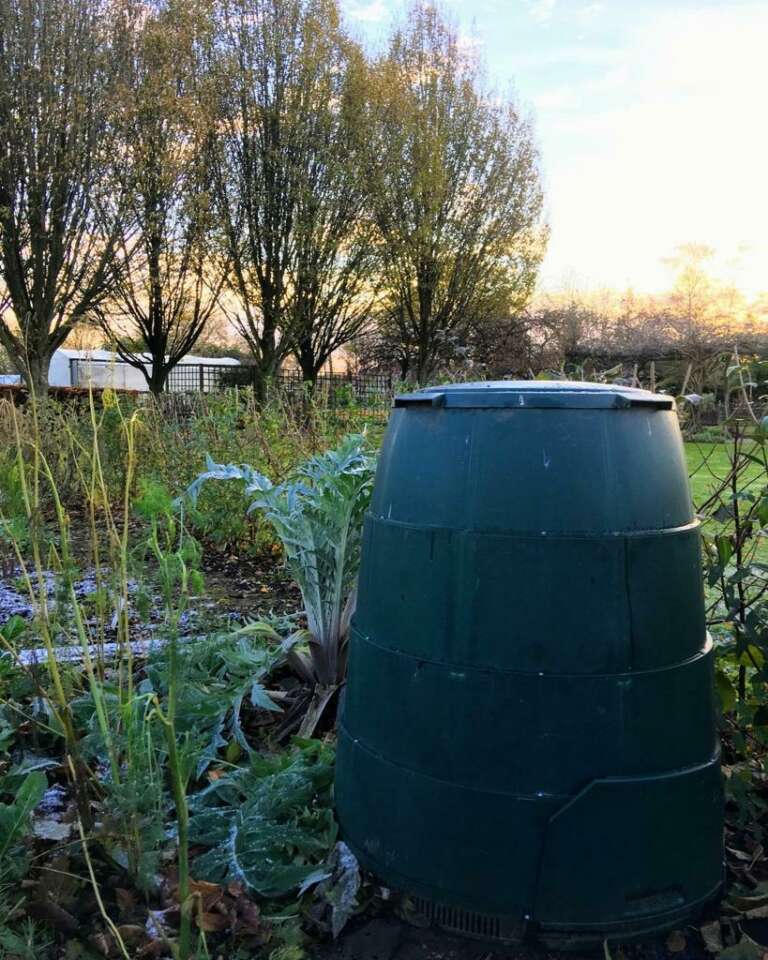Composting
Buying a compost box

See for yourself
Material: Wood is perhaps the most appropriate material for a compost box as it provides some insulation and 'breathes', so the compost is less likely to get too wet.
The majority of bins on the market are plastic and these can work well, though they are not as good at retaining heat. Choose recycled plastic where possible. Metal ones can be useful where vermin are a problem. Whatever the material, it should be frost, rain and sunproof.
Strength: A compost container can take quite a battering and a full load of compost is quite a weight - so make sure it is sturdy.
Weight: Too heavy and difficult to move, should this be necessary; too light and it may blow over or not be strong enough to hold the compost.
Design: A compost bin should have few if any, holes or gaps in the sides. Large gaps allow the material to dry out and heat to escape.
Size: One cubic yard (750 litres) has always been recommended as a minimum for fast, hot composting. Most bins on the market are smaller than this but still work well and are more appropriate for smaller gardens. They average around 200-300 litres. Models smaller than this are unlikely to be satisfactory as they fail to retain sufficient heat for composting.
Lid: Rain cools a compost heap down, and washes out nutrients and air, so a lid is important. It should fit well so it is not blown away by the wind, but equally should be easy to remove and replace.
Base: Compost bins do not usually have, or need, a base. Free access to the soil allows good drainage and easy ingress for worms and other creatures that are important in the composting process. Where vermin are a problem, a metal bin with an integral base is a good idea, as long as there is adequate drainage.
Opening: A reasonable sized opening at the top is important. Trying to deposit or remove forkfuls of compost material through a narrow opening is not easy.
Access to compost: You'll need to get at the stuff in the compost bin to turn it (if you do), and remove the finished product. The simplest method is to just lift the bin off. If it cannot be lifted, then some form of removable side is the best idea. Several bins have an access door at ground level. The theory is that you just open this and scoop out the finished compost. The container would still have to be removed when turning the material.
Compost tumblers
A compost tumbler is a barrel-shaped container that has some form of framework so that it can be rotated by hand. The container is filled with the same ingredients as the usual heap, left for a few days to allow the composting to start, and then turned several times each day. The turning action of the tumbler ensures that the composting bacteria are never short of oxygen, so they keep working at full speed. The constant mixing ensures that all the ingredients are well composted and that there are no dry edges. This can be very useful when weed seeds or diseased material are being composted. A tumbler has the added benefit of being vermin-proof. To function properly, the tumbler needs to be filled all at once, so is not suitable for adding material a little at a time.
Compost tumblers tend to heat up very well, and after three weeks or so will produce an immature compost in which the original ingredients will be unrecognisable. At this stage it can be used directly in the garden, or stacked up undercover to mature into a finer product, leaving the tumbler free to be filled again.
The biggest disadvantage of this method of composting is that it can be hard work. It does take a strong arm (and back), to turn a tumbler!
The Organic Gardening Catalogue supplies a good range of compost bins. Many councils are promoting home composting these days, and some will provide compost bins free of charge, or at a discount price. Contact yours to see if they do.
If possible, it is always a good idea to see a compost bin 'in the flesh' before you buy it. There are a range on show at Garden Organic's Ryton Gardens and some garden centres will have a selection.
Having bought or made your compost bin, we offer you the opportunity of learning how to feed it! Half-day courses are run periodically at Ryton Organic Gardens, see our courses page for more details.